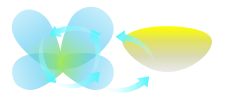Antenna classification
1. Antenna classification
Antennas are devices used to transmit or receive radio waves, and are an important component of wireless networks.
1.1 Classification based on the characteristics of horizontal directional maps
According to the characteristics of the horizontal pattern, antennas can be divided into the following types:
Omnidirectional antenna

The omnidirectional antenna radiates the same radio wave energy in all directions in the horizontal plane, but the radio wave energy radiated in different directions in the vertical plane is different.
Directional radiation is similar to visible light emitted by incandescent lamps, radiating 360 degrees horizontally.
Directional antenna

The radio wave energy radiated by directional antenna in all directions in the horizontal plane and the vertical plane is different.
Directional radiation is similar to the visible light emitted by a flashlight, radiating in a certain direction. With the same RF energy, it can achieve longer coverage distance, but at the cost of sacrificing coverage in other areas.
Smart antenna

The smart antenna has multiple directional radiation and one omnidirectional radiation mode on the horizontal plane.
The antenna receives signals transmitted by the terminal in omnidirectional mode; The smart antenna algorithm judges the location of the terminal according to the received signal, and controls the CPU to send control signals to select the directional radiation mode where the maximum radiation direction points to the terminal.
1.2 Classification by polarization method
According to polarization methods, it can be divided into single polarization antennas and dual polarization antennas. Both single polarization and dual polarization are essentially linear polarization methods, usually consisting of horizontal polarization and vertical polarization.

Single polarization antenna: receiving and transmitting are two separate antennas, with only one polarization method included in each antenna. Wireless signals are horizontally transmitted for horizontal reception or vertically transmitted for vertical reception. Therefore, more installation space and maintenance workload are required.
Dual polarization antenna: receiving and transmitting are two antennas, one consisting of vertical and horizontal polarization modes.





